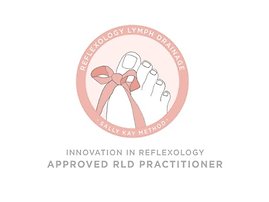
I practice integrated Traditional Chinese Medicine (TCM) - wich focuses on the symptoms of the illness, and Five Element Acupuncture - which focuses on the whole person.
What is acupuncture
The TCM way of understanding health and illness has been developed over more than 2000 years. Through dedicated practice, careful observation, recording and confirmation of the findings a comprehensive and consistent approach to healthcare was developed. This theoretical knowledge is the basis of the diagnosis and treatment. In Chinese medicine the physical, emotional and mental aspects of a human being are interdependent and they form a unity. Therefore the symptoms of a disease cannot be separated from the person as a whole and so treatment plans and point combinations are tailored to the individual's needs.
The traditional acupuncture theories of health and illness are based on Qi (loosely translated as "life-force"). Qi flows around the body through a network of channels or meridians. Through questioning and observation the acupuncturist assesses the state of the patient's Qi. This assessment can be related to the "organs" - which are defined differently in Chinese Medicine to the biomedical lung, liver etc organs, altough there are some overlaps. In the traditional theory illness can be described in terms of deficiency of Qi, excess of Qi, or blockage of Qi within the meridian and organ system. The acupuncturist seeks to move the Qi within this system to strengthen deficiency, reduce excess and clear blockages and thus restore balance. As a result, your ability to heal yourself is activated. Usually, your symptoms are relieved and you feel a greater sense of wellbeing. How long this takes is often related to how long you have had the problems.

The needles are filiform, single use, sterile, stainless steel needles. They are sometimes inserted only for a few seconds and sometimes they are left in place for a little while before they are removed. They are so fine that most people don't even feel them when they are inserted. There may be some mild tingling or dull sensation when the needles are manipulated. Most people find the treatments very relaxing.


Other techniques such as gua sha (scraping), cupping, tuina massage have also been used alongside acupuncture for tousands of years. Moxibustion is another technique during which a dried herb - mugwort or moxa - is slowly burnt to warm and activate energy channels and acupuncture points. Traditionally practitioners would also give dietary advice and qigong exercises to their patients.
What are the benefits
A lot of people seek acupuncture to help relieve specific conditions, especially pain conditions such as tension headaches, migraines, neck or back pain, osteoarthritis of the knee and temporomandibular joint pain. Clinical trials have shown that acupuncture does relieve these symptoms, at least in the short term. For some painful conditions the benefits have been shown to last at least a year. For more information on research on acupuncture please visit the British Acupuncture Council's website or feel free to contact me.
Whatever your particular problem, because treatment is designed to affect your whole body and not just your symptoms, you may notice other niggling complaints also get better with a course of treatment. Indeed, some people choose acupuncture when they feel their bodily functions are out of balance, but they have no obvious diagnosis. Once tried, many people have regular or ‘top-up’ treatments because they find it so beneficial and relaxing. For some conditions, such as migraine, acupuncture can be given to prevent flare-ups from occurring. Another benefit of acupuncture is that it can be given alongside other therapies and/ or medication, in almost all circumstances.
What to expect
At the initial consultation I will take your detailed medical history, feel your pulses, look at your tongue and examine the area of your symptoms. Your individual treatment plan will be based on your state of health and lifestyle.
Normally people have a course of treatments. Weekly sessions are quite usual to start with, for the first 6 sessions, reducing the frequency as your body responds.
The initial consultation includes the first treatment and lasts for about 1.5 hours. Follow-up sessions are about 1 hour long.
For information on pricing and to book please click here.
Photographer: Matthew Kaltenborn





